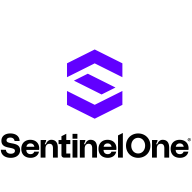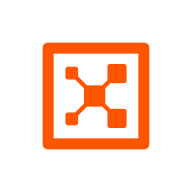


Illumio and Lacework FortiCNAPP are cybersecurity solutions. Illumio has an edge in user support and ease of deployment, whereas Lacework FortiCNAPP excels due to its robust feature set.
Features: Illumio offers real-time threat visibility, micro-segmentation, and an application-centric security approach. Lacework FortiCNAPP provides cloud-native security tools, automated compliance, and advanced threat detection.
Room for Improvement: Illumio could improve data analytics, expand integration capabilities, and enhance reporting flexibility. Lacework FortiCNAPP might need to simplify setup procedures, enhance user interface design, and improve customization options.
Ease of Deployment and Customer Service: Illumio is praised for its straightforward deployment and responsive customer support, simplifying the onboarding experience. Lacework FortiCNAPP, while requiring more complex integration, offers detailed guidance and extensive documentation, making it manageable for users.
Pricing and ROI: Illumio provides a cost-efficient setup with solid ROI through scalable security models. Lacework FortiCNAPP may have higher setup costs but offers significant ROI due to extensive security features and threat management effectiveness.
The detailed information PingSafe gives about how to fix vulnerabilities reduces the time spent on remediation by about 70 to 80 percent.
After implementing SentinelOne, it takes about five to seven minutes.
Cloud Native Security does offer ROI.
Illumio is known to be the cheapest solution among the security solutions we evaluated.
When we send an email, they respond quickly and proactively provide solutions.
They took direct responsibility for the system and could solve queries quickly.
Having a reliable team ready and willing to assist with any issues is essential.
Even if we raise an issue on non-working days like Saturdays or Sundays, we receive prompt responses.
From my experience, they are very responsive.
Technical support from Fortinet is good; I get feedback and responses quickly.
I would rate it a 10 out of 10 for scalability.
Scalability is no longer a concern because Cloud Native Security is a fully cloud-based resource.
I would rate the scalability of PingSafe 10 out of 10.
Scaling it to a large level is not an issue for us.
It's a reliable solution that the organization is increasingly adopting for its robust features and security.
We contacted Cloud Native Security, and they addressed it in a day.
The only downtime we had was when switching from V1 to V2 but it was smooth.
Illumio is a stable solution with no glitches or bugs reported, making it a reliable product for us.
If they can merge Kubernetes Security with other modules related to Kubernetes, that would help us to get more modules in the current subscription.
As organizations move to the cloud, a cloud posture management tool that offers complete cloud visibility becomes crucial for maintaining compliance.
I would also like to see Cloud Native Security offer APIs that allow us to directly build dashboards within the platform.
There could also be more examples of how the automations can be done using Illumio.
That's why I'm looking for comparisons with other products.
There should be an option to upgrade from the console to the latest version instead of performing manual upgrades.
The vulnerability part is not systematically organized; it is all clumsy in the web UI, and it is not user-friendly.
I believe the enterprise version costs around $55 per user per year.
There are some tools that are double the cost of Cloud Native Security.
I recall Cloud Native Security charging a slightly higher premium previously.
I know that Illumio is the cheapest solution in the security area.
I think it's not very expensive if we compare it with Guardicore.
This helps visualize potential attack paths and even suggests attack paths a malicious actor might take.
The infrastructure-as-code feature is helpful for discovering open ports in some of the modules.
This tool has been helpful for us. It allows us to search for vulnerabilities and provides evidence directly on the screen.
Illumio helps in audit purposes by saving data and showing blocked traffic, ensuring no outside traffic is allowed.
The most important feature is the traffic review analysis, where we use the draft view and the reported view that helps us understand how the application interacts with other applications in the environment, and based on that, we are able to define the policies.
The dependency map is the most valuable aspect.
The machine learning capability in Lacework FortiCNAPP is used for threat detection.
| Product | Market Share (%) |
|---|---|
| SentinelOne Singularity Cloud Security | 3.6% |
| Illumio | 6.1% |
| Lacework FortiCNAPP | 2.4% |
| Other | 87.9% |



| Company Size | Count |
|---|---|
| Small Business | 47 |
| Midsize Enterprise | 20 |
| Large Enterprise | 52 |
| Company Size | Count |
|---|---|
| Small Business | 3 |
| Midsize Enterprise | 1 |
| Large Enterprise | 8 |
| Company Size | Count |
|---|---|
| Small Business | 4 |
| Midsize Enterprise | 4 |
| Large Enterprise | 4 |
SentinelOne Singularity Cloud Security offers a streamlined approach to cloud security with intuitive operation and strong integration capabilities for heightened threat detection and remediation efficiency.
Singularity Cloud Security stands out for its real-time detection and response, effectively minimizing detection and remediation timelines. Its automated remediation integrates smoothly with third-party tools enhancing operational efficiency. The comprehensive console ensures visibility and support for forensic investigations. Seamless platform integration and robust support for innovation are notable advantages. Areas for development include improved search functionality, affordability, better firewall capabilities for remote users, stable agents, comprehensive reporting, and efficient third-party integrations. Clarity in the interface, responsive support, and real-time alerting need enhancement, with a call for more automation and customization. Better scalability and cost-effective integration without compromising capabilities are desired.
What are SentinelOne Singularity Cloud Security's standout features?SentinelOne Singularity Cloud Security is deployed in industries needing robust cloud security posture management, endpoint protection, and threat hunting. Utilized frequently across AWS and Azure, it assists in monitoring, threat detection, and maintaining compliance in diverse environments while providing real-time alerts and recommendations for proactive threat management.
Illumio Zero Trust Segmentation is a cloud and data center security solution that helps stop breaches from spreading across hybrid and multi cloud IT environments. The solution is designed to stop ransomware, contain cyber attacks, and reduce risk. With Illumio Zero Trust Segmentation, users can understand relationships and communications to map exposure risk of systems and data, identify the right security posture and secure applications through least-privilege policies, and ensure a Zero Trust security posture.
Illumio Zero Trust Segmentation Features
Illumio Zero Trust Segmentation has many valuable key features. Some of the most useful ones include:
Illumio Zero Trust Segmentation Benefits
There are many benefits to implementing Illumio Zero Trust Segmentation. Some of the biggest advantages the solution offers include:
Reviews from Real Users
Illumio Zero Trust Segmentation is a solution that stands out when compared to many of its competitors. Some of its major advantages are that it has a good auto policy writing feature, great mapping, and useful monitoring.
Shashi, Technical Consultant at a financial services firm, explains which features she really likes. “The auto policy writing is great. The feature will give you the option of inbound-outbound traffic. The Explorer allows you to know the traffic between source and destination. The illumination definitely stands out. Mapping is great. The application group mapping is useful.”
The solution has “helpful support, useful monitoring, and high availability,” according to Edwin L., Security Architect at MGM.
Lacework FortiCNAPP provides robust cloud security, combining vulnerability management and multi-cloud insight with user-friendly controls, machine learning detection, and compliance support.
Lacework FortiCNAPP specializes in cloud security by merging machine learning anomaly detection with agent-based vulnerability management to offer detailed alerts and compliance reports. Its comprehensive approach allows continuous monitoring across AWS and Kubernetes, providing insights from an attacker's perspective. The platform offers automation and seamless Slack integration, facilitating collaborative and efficient cloud security management. Users value its ability to handle multi-cloud environments and scan IAC scripts, configurations, and compute nodes across AWS and GCP.
What are the key features?Organizations across sectors leverage Lacework FortiCNAPP for cloud security, focusing on compliance, security posture, and vulnerability management. It is widely used for monitoring AWS and Kubernetes environments, scanning IAC scripts, configurations, and securing compute nodes. It supports multi-cloud security posture management and log ingestion, enabling companies to maintain strong cloud infrastructures without dedicated security layers.
We monitor all Cloud Workload Protection Platforms (CWPP) reviews to prevent fraudulent reviews and keep review quality high. We do not post reviews by company employees or direct competitors. We validate each review for authenticity via cross-reference with LinkedIn, and personal follow-up with the reviewer when necessary.